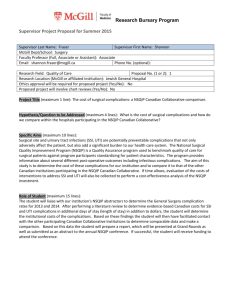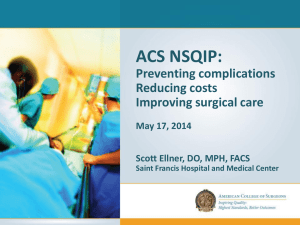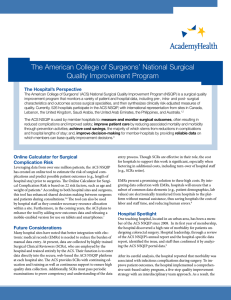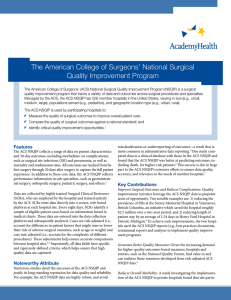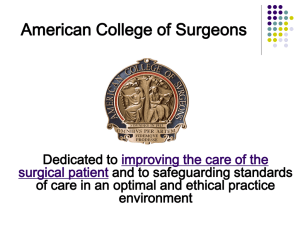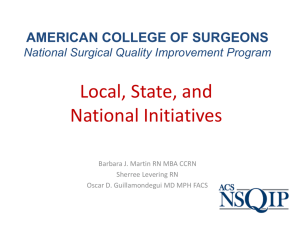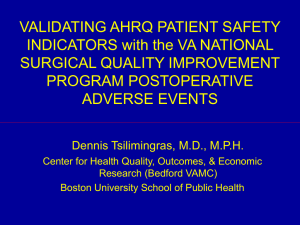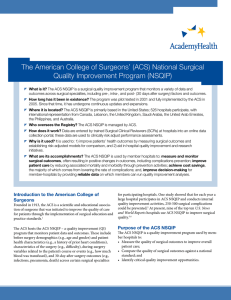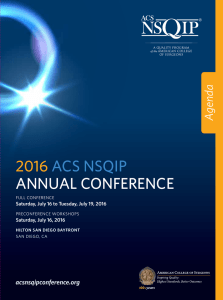webappendix
advertisement
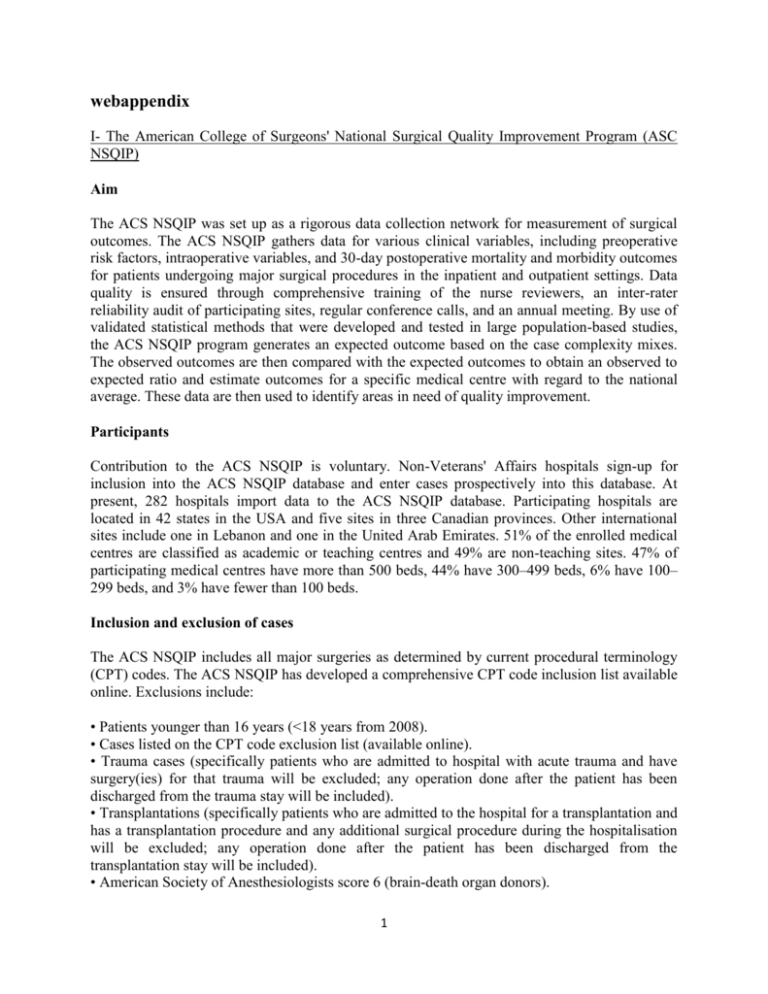
webappendix I- The American College of Surgeons' National Surgical Quality Improvement Program (ASC NSQIP) Aim The ACS NSQIP was set up as a rigorous data collection network for measurement of surgical outcomes. The ACS NSQIP gathers data for various clinical variables, including preoperative risk factors, intraoperative variables, and 30-day postoperative mortality and morbidity outcomes for patients undergoing major surgical procedures in the inpatient and outpatient settings. Data quality is ensured through comprehensive training of the nurse reviewers, an inter-rater reliability audit of participating sites, regular conference calls, and an annual meeting. By use of validated statistical methods that were developed and tested in large population-based studies, the ACS NSQIP program generates an expected outcome based on the case complexity mixes. The observed outcomes are then compared with the expected outcomes to obtain an observed to expected ratio and estimate outcomes for a specific medical centre with regard to the national average. These data are then used to identify areas in need of quality improvement. Participants Contribution to the ACS NSQIP is voluntary. Non-Veterans' Affairs hospitals sign-up for inclusion into the ACS NSQIP database and enter cases prospectively into this database. At present, 282 hospitals import data to the ACS NSQIP database. Participating hospitals are located in 42 states in the USA and five sites in three Canadian provinces. Other international sites include one in Lebanon and one in the United Arab Emirates. 51% of the enrolled medical centres are classified as academic or teaching centres and 49% are non-teaching sites. 47% of participating medical centres have more than 500 beds, 44% have 300–499 beds, 6% have 100– 299 beds, and 3% have fewer than 100 beds. Inclusion and exclusion of cases The ACS NSQIP includes all major surgeries as determined by current procedural terminology (CPT) codes. The ACS NSQIP has developed a comprehensive CPT code inclusion list available online. Exclusions include: • Patients younger than 16 years (<18 years from 2008). • Cases listed on the CPT code exclusion list (available online). • Trauma cases (specifically patients who are admitted to hospital with acute trauma and have surgery(ies) for that trauma will be excluded; any operation done after the patient has been discharged from the trauma stay will be included). • Transplantations (specifically patients who are admitted to the hospital for a transplantation and has a transplantation procedure and any additional surgical procedure during the hospitalisation will be excluded; any operation done after the patient has been discharged from the transplantation stay will be included). • American Society of Anesthesiologists score 6 (brain-death organ donors). 1 • Concurrent cases (an additional operative procedure undertaken by a different surgical team under the same anaesthetic; for example, coronary artery bypass graft procedure on a patient who is also undergoing a carotid endarterectomy. An assessment is not required on the concurrent procedure; however, this procedure would be reported as concurrent in the operative section for the assessed case). • To ensure a diverse surgical casemix, the following criteria are also excluded (at each centre): •More than three inguinal herniorrhaphies in 8 days •More than three breast lumpectomies in 8 days •More than three laparoscopic cholecystectomies in 8 days •If the site is collecting urology cases, more than three transurethral resections of the prostate or transurethral resections of bladder tumour in 8 days II- Missing values Missing values: The following variables had missing values: Race (n=793, 8.5%), ASA class (8, 0.1%), Days from admission to operation (n=1, 0.01%), History of CVA without neurological deficit (n=2, 0.02%), Body-mass index (n=77, 0.8%), Serum sodium (n=1,383, 14.9%), Blood urea nitrogen (n=1,580, 17.0%), Serum creatinine (n=1,165, 12.5%), Serum albumin (n=3,658, 39.0%), Aspartate aminotransferase (n=3,315, 35.7%), Alkaline phosphatase (n=3,273, 35.2%), White blood cell count (n=5,816, 2.6%), Platelet count (n=287, 3.2%), INR (n=6,499, 69.9%), Days from hematocrit measurement to operation (n=39, 0.4%). 2
